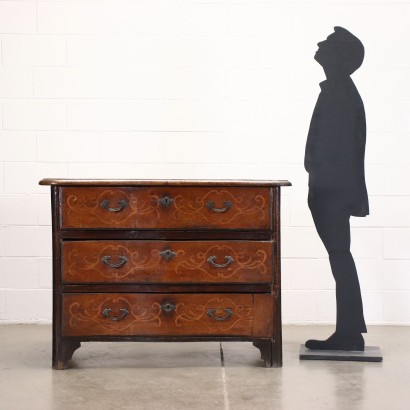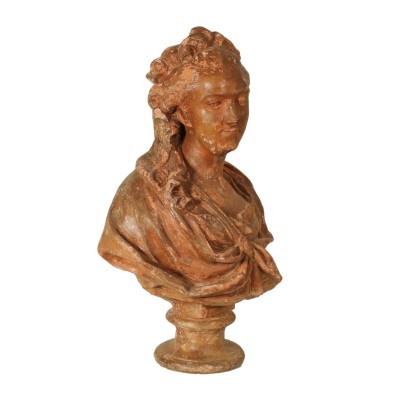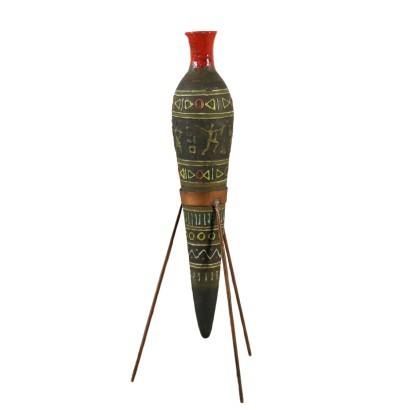Chest of Drawers Cherry Italy XVIII Century - Piedmont Third Quarter XVIII Century
Features
Piedmont Third Quarter XVIII Century
Age: 18th Century / 1701 - 1800
Origin: Piemonte, Italy
Description
Chest of drawers supported by shelf feet, on the wavy front it has three drawers; in cherry, is adorned with characteristic maple inlays, interior in poplar. Presents restorations.
Product Condition:
Product that due to age and wear requires restoration and resumption of polishing.
Dimensions (cm):
Height: 97
Width: 130
Depth: 59
Additional Information
Age: 18th Century / 1701 - 1800
18th Century / 1701 - 1800Main essence:
Cherry
Obtained from prunus cerasus , a plant of oriental origin, it is a hard wood with a light and delicate color, with a reddish vein. Due to its diffusion and availability it was used in Europe in popular furniture. In cabinet making, in the seventeenth century, it was widely used in France and England for inlay work. In Italy it was very successful in Lucca. It was also very popular in the United States for the manufacture, from the late 1600s, of commonly used furniture.The dictionary of antiques: Eclecticism
Classic Monday: a sofa from the 1800s example of eclecticism
Poplar
Essence considered "poor", it is a white wood, with yellowish or greyish shades, light and tender, which is easily damaged. It is used for rustic furniture or in the construction of furniture. The most valuable use it has had in the history of furniture is in Germany, in the 19th century, for veneers and inlays in the Biedermeier period. It could also interest you


























